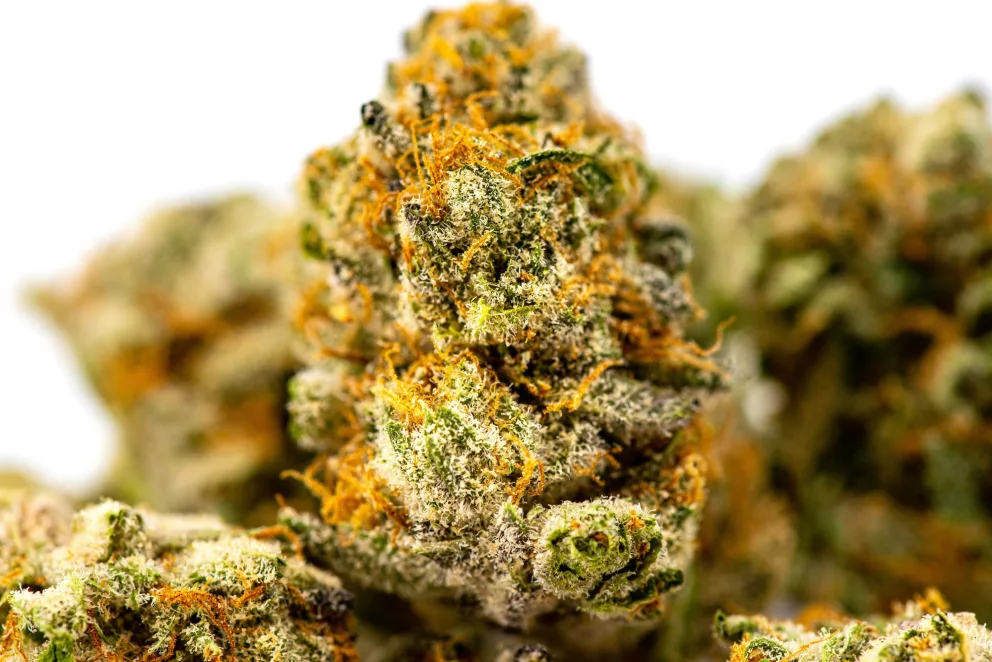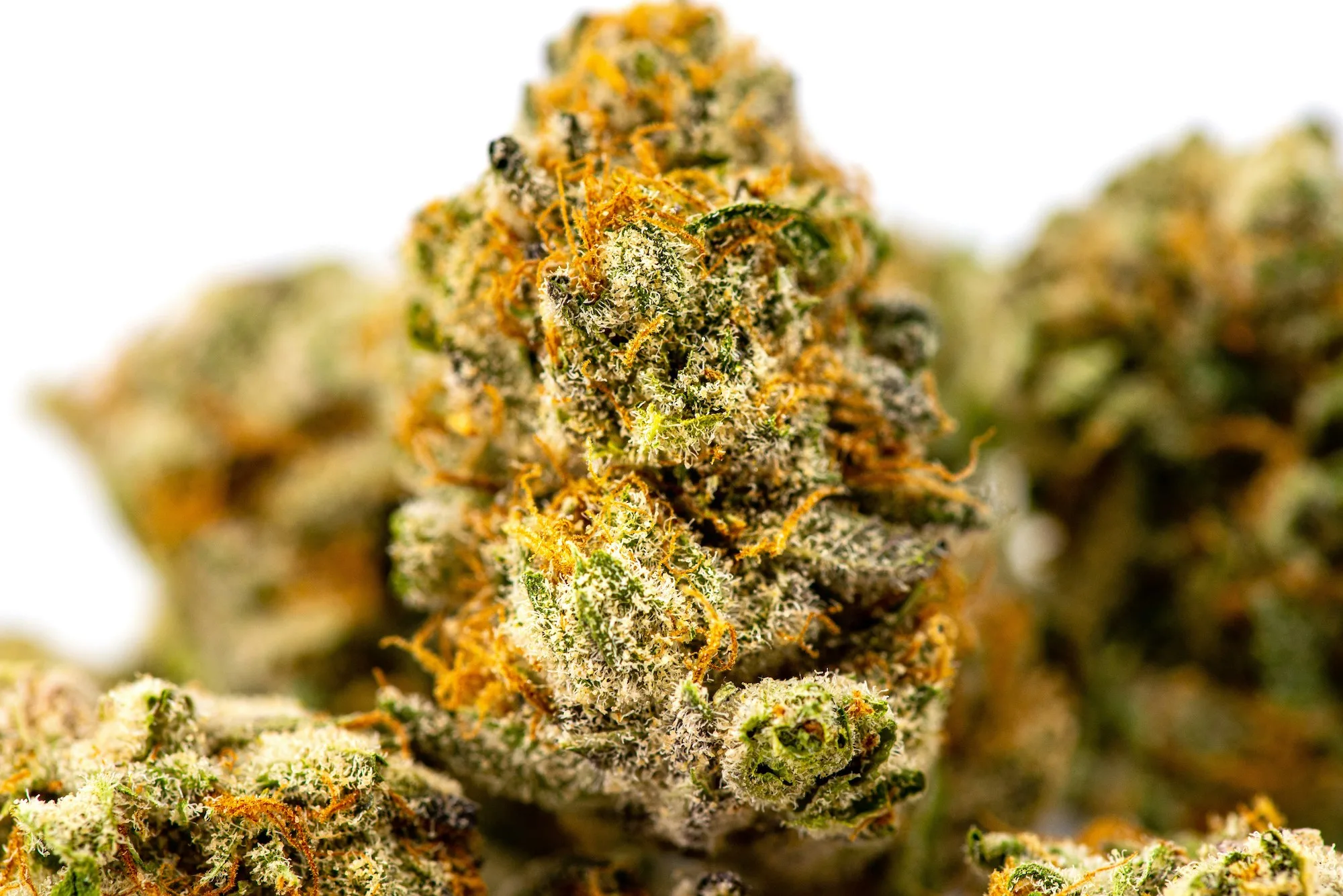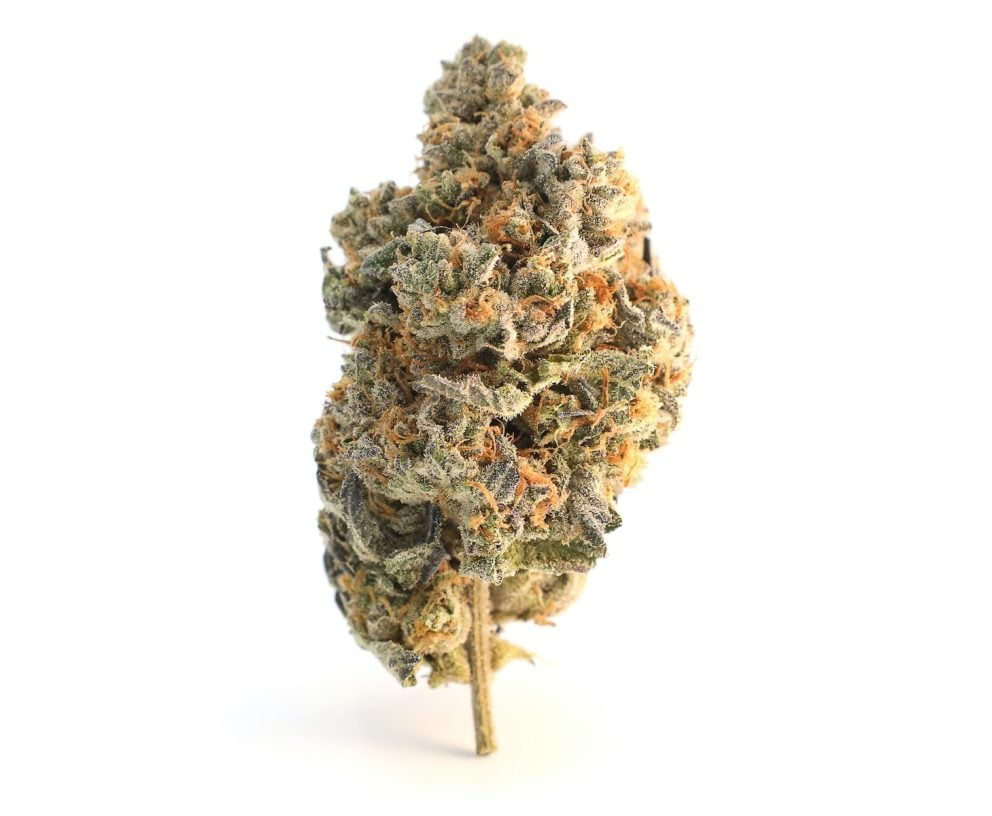
Photo by Avery Meeker
So much of the draw to cannabis, both medical and recreational, is that it’s plentiful with cannabinoids including the psychoactive THC. Meanwhile, the parts of the cannabis plant that create and store these cannabinoids are the trichomes.
What exactly are trichomes and when do trichomes appear in a cannabis plant’s development? How do you know when trichomes have fully matured? What is the difference between trichomes and kief? How can you differentiate between trichomes and mold?
This article will introduce you to these fascinating parts of the cannabis plant and give you a clear picture of how they work. Trichome development is a key part of cannabis cultivation.
Understanding the anatomy of a cannabis plant and how trichomes develop can help you decipher between super potent and moldy weed. This introduction to trichomes will give you a full understanding of what they do.
What Are Trichomes?
Trichomes are hair-like glands that grow on the cannabis plant. Trichomes are essentially cannabinoid factories that create cannabinoids and are chock full of them when you harvest your cannabis.
While leaves and stems can contain some cannabinoids and terpenes, the trichomes are concentrated within cannabinoids. An important key to harvesting your cannabis flower is when you can tell that the cannabinoids in the trichomes are at the level you want them to be.
Over the cannabis plant’s life cycle, trichomes slowly begin creating a resin that’s full of cannabinoids and terpenes. If you’ve ever seen the small crystal formations that can collect on cannabis flowers, that’s resin that has dried on the trichomes.
Kief, which is popular for its high THC content, is often composed of trichomes that have fallen through herbal grinders. A tray at the bottom of many grinders allows you to collect these trichomes as they naturally fall to the bottom thanks to gravity.
Trichomes exist naturally in the cannabis plant to help protect it from pests and forces of nature. Many popular cannabinoids and terpenes actually serve a dual purpose in keeping plants safe by fighting off bacteria, pests, and harsh weather changes.
When Do Trichomes Appear?
Trichomes appear naturally in part of the development of female cannabis plants. Male cannabis plants aren’t often grown because they would fertilize your harvest.
Fertilization launches seed production which is the enemy to the cannabis grower. Seed development means your cannabis plants are focused on seed production and not on making THC. Plants with seeds tend to have a lower THC content.
Trichomes tend to appear in the third or fourth week of the cannabis plant’s flowering stage. Most strains begin flowering in 8-9 weeks, so trichomes can begin appearing in 11 to 13 weeks.
Trichomes drive the main goals of cultivation of cannabinoids. The development and maturation of cannabinoids within the trichomes help let growers know when it’s time to harvest.
What Do Trichomes Look Like?
It’s easy to confuse trichomes with the natural hair-like fibers that form on cannabis plants. The long hair-like follicles that develop on cannabis flowers and tend to turn brownish are called pistils.
Pistils are the female sex organs of plants. As the majority of cannabis is unfertilized female plants, they are loaded with pistils. These pistils can change in color during the development of the cannabis plant which is why they can be confused for trichomes.
Trichomes can look like small mushrooms under magnification. They start off clear then can turn milky and opaque and eventually turn amber. To the naked eye they can also seem hair-like like peach fuzz and they can even seem glittery.
Trichomes are not fully visible to the naked eye. They can seem like light hairs but you may need magnification to fully examine trichomes.
How To Look At Trichomes
Trichomes can be hard to fully see. Part of why pistils are so often confused for trichomes is that pistils are readily visible while trichomes require a closer view. In order to fully see trichomes you will need a certain amount of magnification to not just examine them but thoroughly observe their coloring.
You can look at trichomes with a magnifying glass, microscope, or jeweler’s loupe. In some cases, you can even use your phone depending on how much your camera will allow you to zoom in.
The goal is to magnify trichomes to observe their coloring to decide when to harvest. Magnifying glasses are not the best as they can only provide a certain amount of magnification. A microscope can seem like overkill.
”
[fl_builder_insert_layout id=13138]
”
How To Check Trichomes Without Microscope
Collecting a sample of your cannabis and looking at it under a traditional microscope might seem fun or feel super scientific but it can be a waste of perfectly fine product. It can be excessive and purchasing a microscope will hardly provide a return on your investment when cannabis is concerned.
Instead of a microscope consider a jeweler’s loupe. Loupes are used to identify imperfections in jewels. They’re portable and easy to use. You can even use them to take photos of trichomes using your phone.
Some cellphones can even have cameras strong enough to zoom in to view your plant’s trichomes. Feel free to test your camera’s phone by zooming in to see how closely you can examine your cannabis plant.
There are also newer microscopes like usb microscopes that can let you observe trichomes without having to take a sample. Magnifying glasses can sometimes work but may not give you as thorough a look.
How To Increase Trichome Production
Trichomes grow in response to certain environmental factors. There are a few ways to encourage trichome production and increase their cannabinoid content. Plants create trichomes to help respond to UV light.
Proper UV lighting can help increase trichome production. The more light you expose your plant to and the greater the spectrum of light will increase trichome production. Exposing your plants to higher Phosphorus and Potassium levels during the flowering phase can improve trichome production.
Managing the surrounding temperature can also help terpenes from becoming denatured or vaporized based on heat exposure.
Clear Vs Cloudy Trichomes
Trichomes have three different stages of development. At first, trichomes begin forming and are totally clear. That means the trichomes have developed but haven’t begun producing cannabinoids.
Over time, the trichomes will begin turning milky in color as they produce more cannabinoids. As trichomes become opaque, it’s clear that these glands are more full of cannabinoids.
The trichomes will then slowly turn amber over time as cannabinoids get exposed to more heat and light. This is toward the end of the life cycle of trichomes.
What Do Trichomes Look Like When Ready To Harvest?
Trichome development can vary from strain to strain. This means that the balance of trichomes will also vary. Generally, you do not harvest cannabis until your trichomes have at least become milky. Clear trichomes are not ideal.
Different growers have shared different strategies. For example, indica plants can be best harvested when trichomes are milky but before any turn amber. With sativa plants or hybrids, which can often have longer flowering times, you may wait until 30 percent of the glands have turned amber to ensure greater cannabinoid development.
Photo by Chris Buchanan on Unsplash
How Long Before Trichomes Turn Amber
Trichomes can remain milky for about two weeks during the cannabis life cycle. Amber trichomes can tend to have more CBD but they can also have less THC as the THC will convert to CBN.
Do Trichomes Get You High?
Trichomes by nature of being the factories of the cannabinoids tend to be the most dense with THC the chemical that gets you high. Smoking trichomes or using them to create edibles will get you high.
The strength of the high and the density of cannabinoids is why kief can be in such high demand.
Can You Smoke Trichomes?
Yes you can use trichomes when smoking weed. Trichomes as kief are the main ingredient in everything from moon rocks to hash to dabs. Kief can be dusted on joints to increase their THC content and by extension the high.
Does Hemp Have Trichomes?
Yes! Hemp also has trichomes. While they will not contain the same breakdown of cannabinoids, terpenes, and other compounds as marijuana they still exist in the plant. After all, hemp, by definition, is cannabis that has less than .3% THC.
Moldy Weed Vs Trichomes
Given the texture of trichomes they can be confused for moldy weed. While weed can have a long shelf-life and the main concern is the degradation of THC it can still develop mold. Weed can still become moldy.
Unlike mold on bread or fruits, it can be hard to spot mold on weed as it can be confusing when compared to trichomes or pistils. Oddly white or brown sections or if it has developed white fuzz, can be signs of mold.
Trichomes can resemble thin white looking hairs and will still look different from white mold that can form. Trichomes can tend to be crystalline or have a milky white or amber color versus mold which is just white.
If the weed is super dry or oddly spongy or has any other major textural changes that is a sign of mold. This can mean your weed did not have enough or was exposed to too much moisture. These textural changes can be a clear sign of mold.
It’s important to spot-check weed for mold or rot. Trichomes will tend to be uniform while mold may appear a different shade of white in a fixed section.
A study found even high-end cannabis products purchased at dispensaries were already contaminated with fungi and bacteria. Trichomes are not the only super small parts of the plant. There can be changes happening on the microscopic level that can potentially put your health at risk.
Also, keep an eye out for white powder or dust. That’s a sign of mold and spore. Again, cannabis can have kief which can resemble shiny dust. White powder can be a sign of mildew.
How To Tell If Weed Has Gone Bad?
Weed does have a long shelf life but it’s important to keep an eye out for mold which can be toxic. If you identify mold or see the texture has changed those are clear signs your weed has gone bad.
Smell is the key to identifying bad weed. While weed can occasionally smell skunky, if you smell something musty or mildew-like this means your cannabis has gone bad.
If you can see or smell mold it’s important you toss out your cannabis as there can be toxins in the weed that can make you sick. The heat used to smoke it or make edibles does not necessarily kill off all of the toxins from mold.
Final Thoughts
Before consuming cannabis, it may be interesting to know where all of your desired cannabinoids come from. These trichomes not only act like little factories of your favorite cannabis compounds, they also can help provide benchmarks for when to harvest your cannabis.
Trichomes while white and hair-like are still very different from mold. It’s important to know the difference between trichomes and mold to avoid consuming moldy weed.
Before you begin taking or growing cannabis be sure to apply online for a medical marijuana card today to ensure you can legally consume cannabis.


